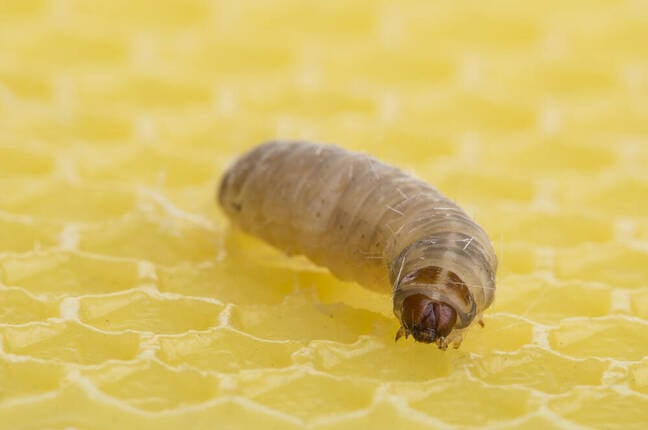Spit of moth larvae probed as answer to plastic pollution • The Register
3 min read
The caterpillar larvae of the wax moth produce saliva with enzymes able of oxidizing and degrading polyethylene, giving a potential option to the plastic pollution problem.
Constructed from synthetic molecules derived from fossil fuels, plastics have transformed the industrial environment because the Second Entire world War. Even so, several plastics do not the natural way biodegrade, top to the buildup of waste goods on land and in the ocean.
Polyethylene, or polythene, would make up about 30 percent of artificial plastic manufacturing. Though some reports present it can be degraded by biological suggests, this typically needs a harsh abiotic pre-procedure these types of as warmth or radiation. The degradation can be achieved by some microorganisms but that can just take months. At the exact same time, researchers have so considerably unsuccessful to recognize the enzymes accountable.
A group of experts led by Federica Bertocchini, a postdoctoral researcher with Consejo Top-quality de Investigaciones Cientificas (CSIC), Spain’s investigation council, have now determined the enzymes which can crack down polyethylene in a few hrs at room temperature.
Waxworms are the caterpillar larvae of wax moths, also known as bee moths. They are nest parasites in bee colonies and eat cocoons, pollen, and lose skins of bees, and chew by beeswax. But what is lousy for bees could be very good for human beings.
Bertocchini and her colleagues examined the saliva of the wax worm (Galleria mellonella), exhibiting that it can degrade polyethylene, and say they have discovered two enzymes that can reproduce this result.
In a paper released in Nature Communications, the authors recommend these enzymes – which they named Demetra and Ceres immediately after the Greek and Roman goddesses of agriculture – could give new techniques to plastic squander degradation as perfectly as the upcycling of plastic elements.
“The wax worm saliva can overcome the bottleneck action in PE biodegradation, specifically the first oxidation action. Within the saliva, we detect two enzymes, belonging to the phenol oxidase household, that can reproduce the same impact. To the very best of our information, these enzymes are the initial animal enzymes with this functionality, opening the way to possible remedies for plastic squander management by bio-recycling/up-cycling,” the paper stated.
By some estimates, there are about 8.3 billion tons of plastic in the world, about 6.3 billion tons of which is squander. In oceans notably, plastic air pollution endangers wildlife and enters the food stuff chain.
“This analyze implies that insect saliva may well result as a depository of degrading enzymes which could revolutionize the bioremediation industry,” the authors reported. “Though more reports will be vital to obtain a further knowing of the phase-by-action evolution of plastic in make contact with with wax worm saliva enzymes, this discovery introduces a further possible solution for working with plastic degradation. In a round economic system body, this research opens up a possible discipline the two in plastic upcycling, and in production the plastic of the long term, with ad-hoc formulations susceptible to aid degradation by chosen enzymes.” ®







